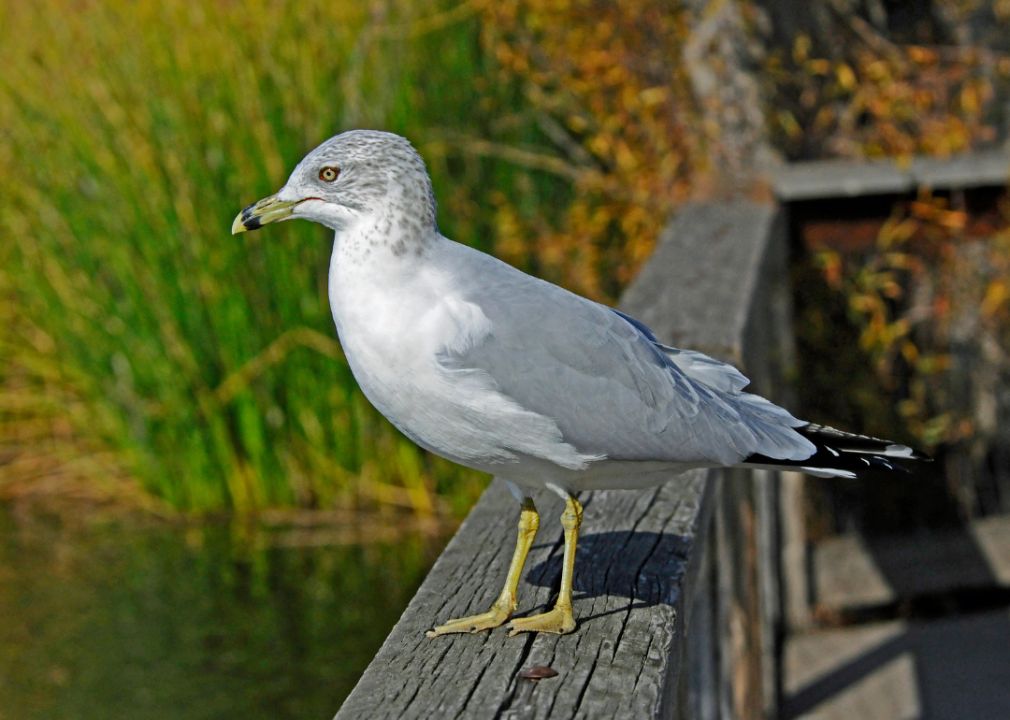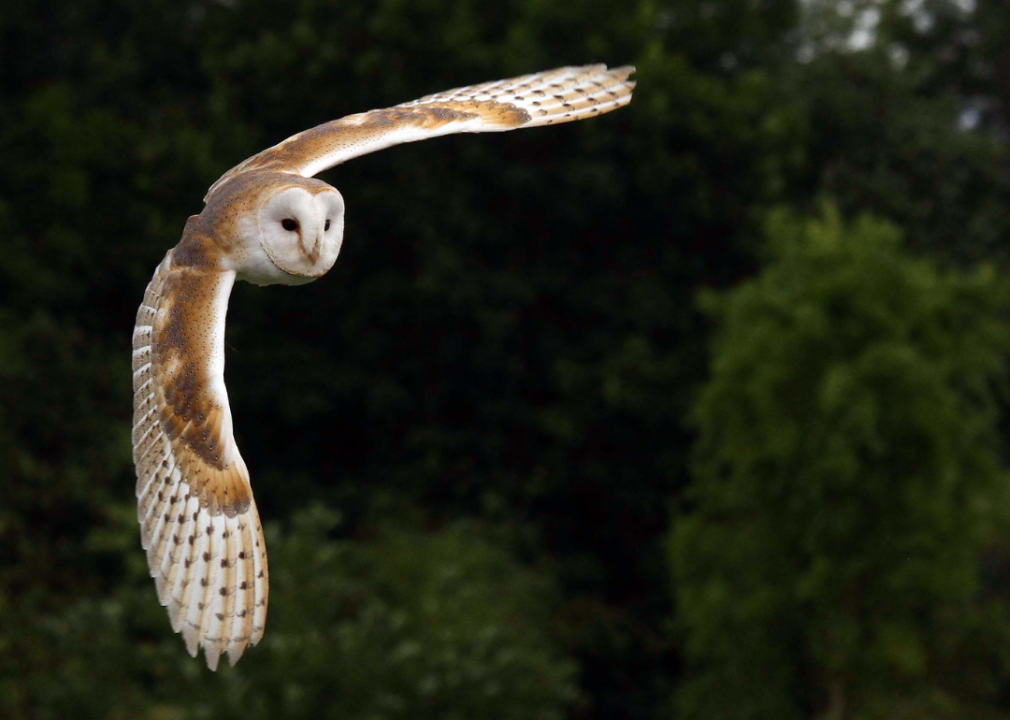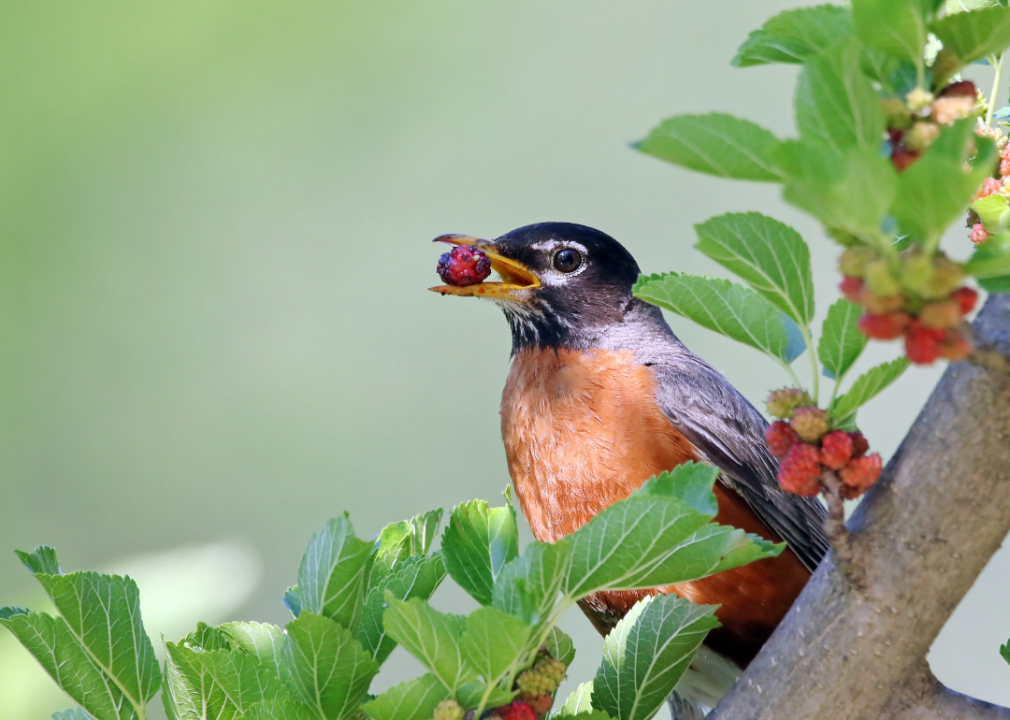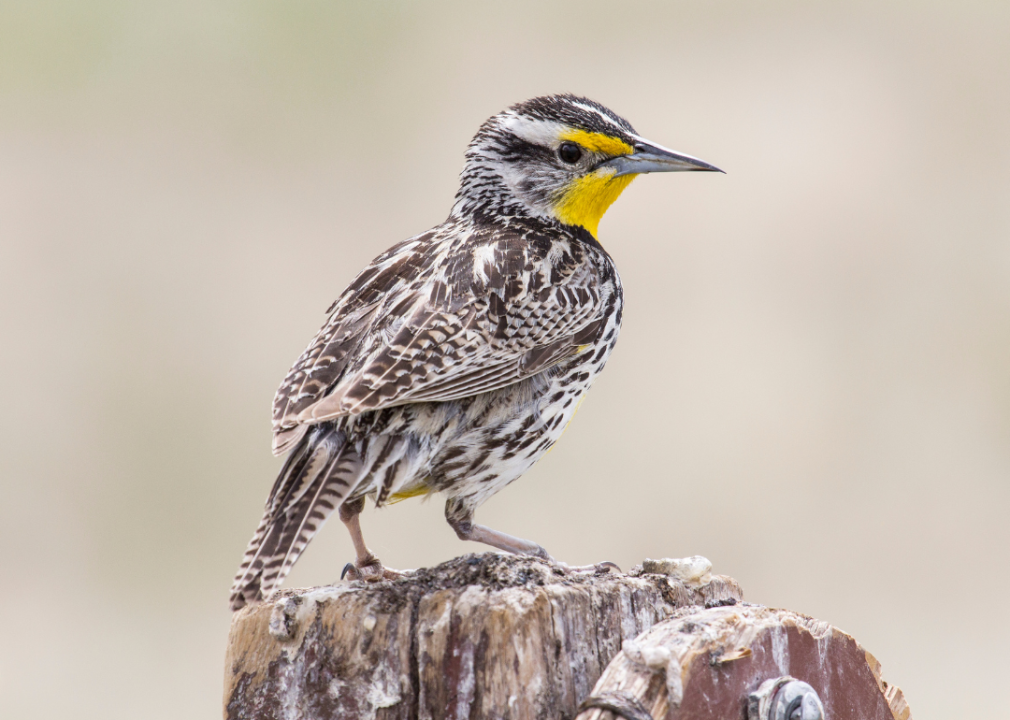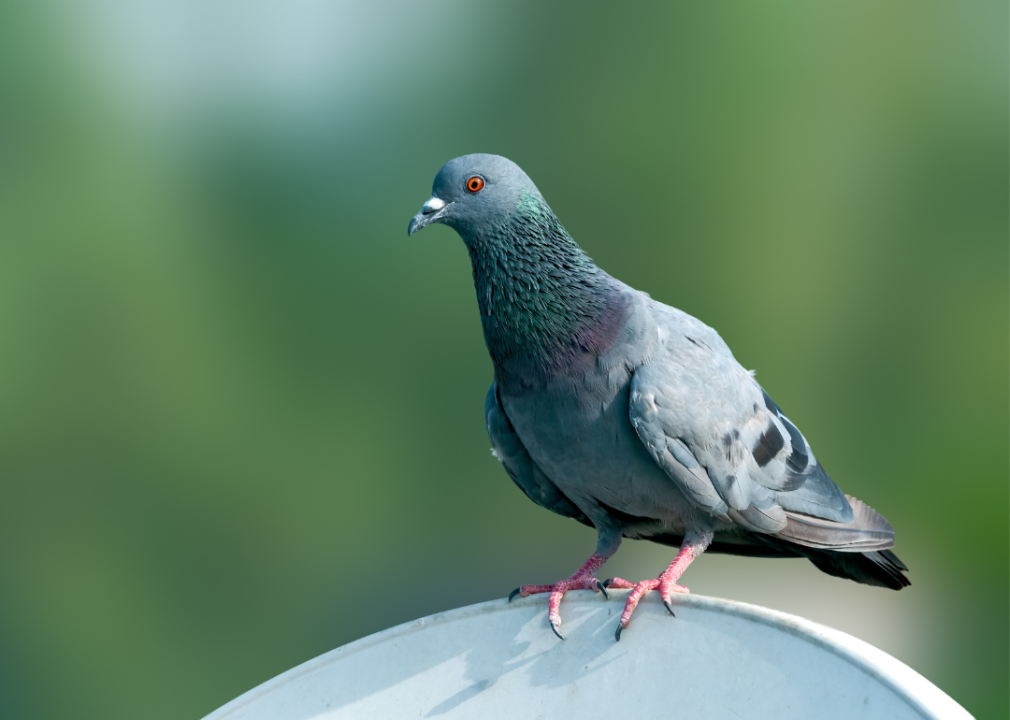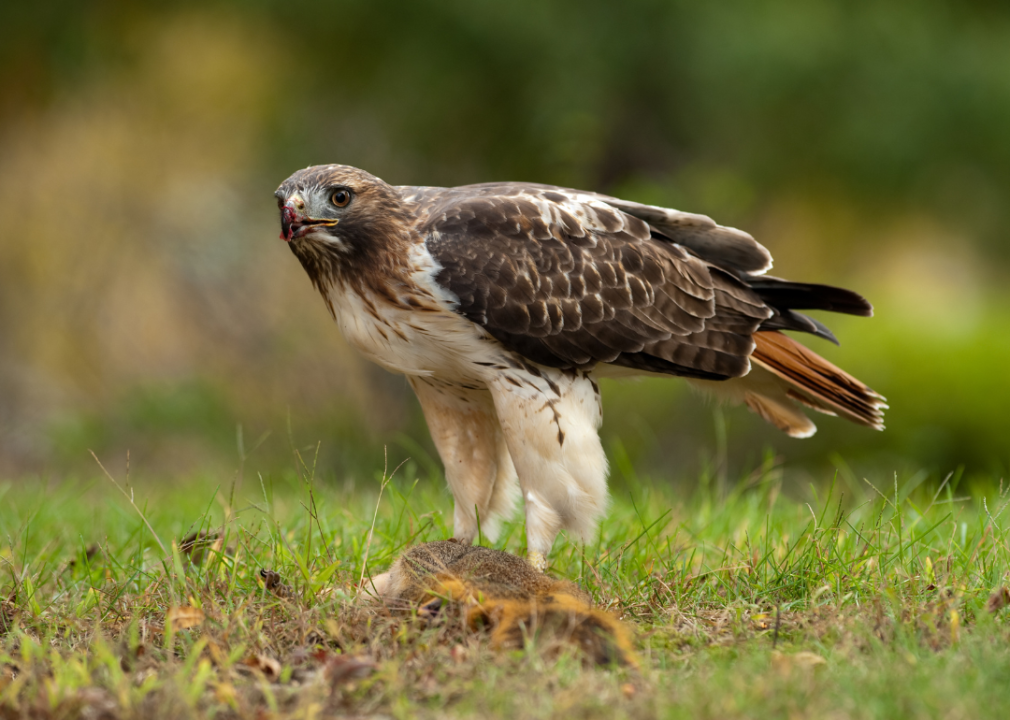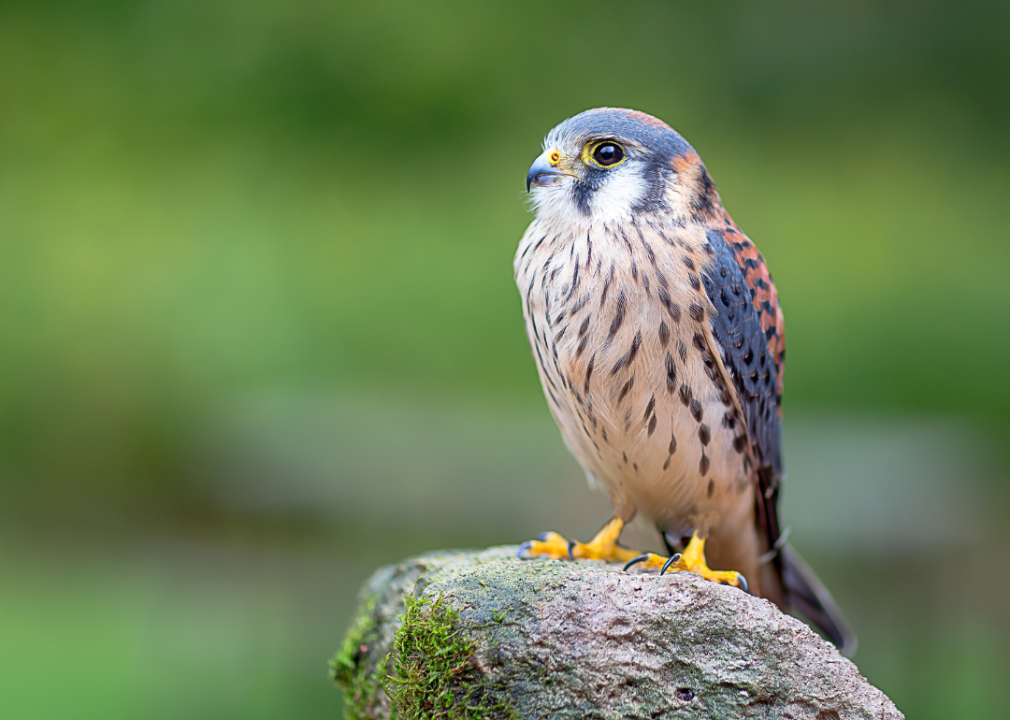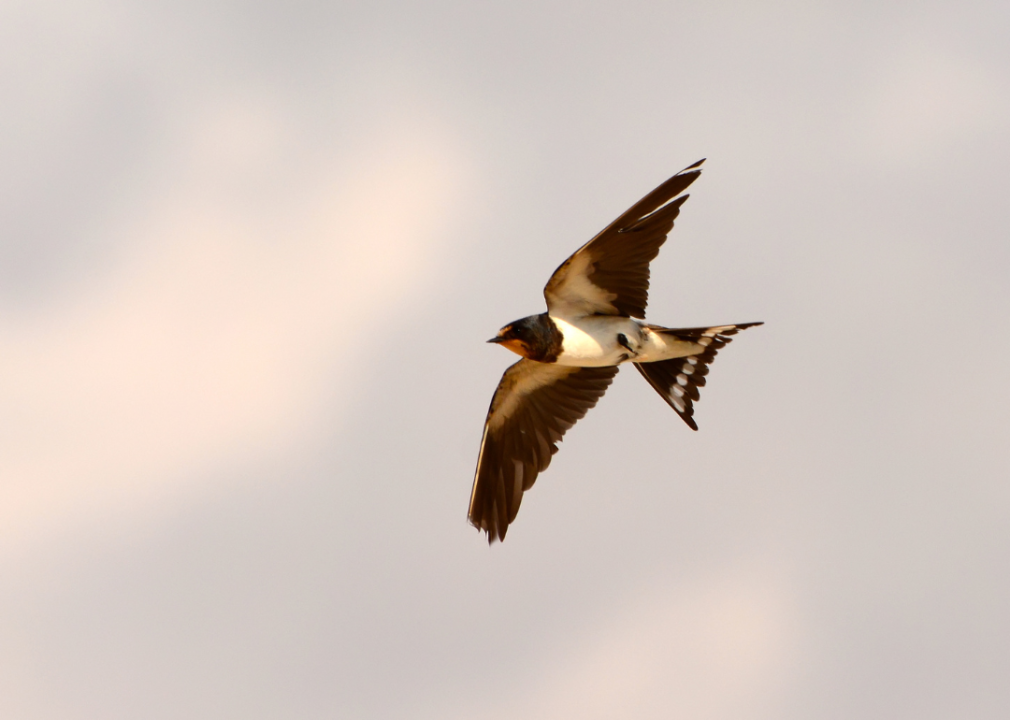25 animals most commonly struck by aircraft
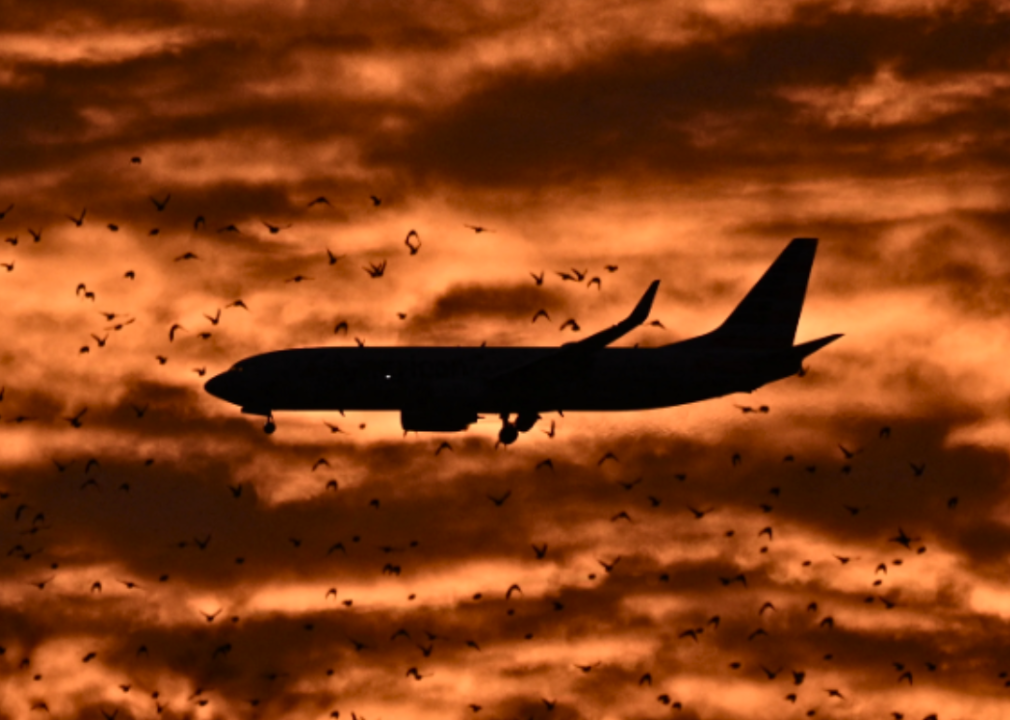
BRENDAN SMIALOWSKI/AFP // Getty Images
25 animals most commonly struck by aircraft
A silhouette of a plane flying through a flock of birds against an orange sky at sunset.
Two years after he helped invent the airplane, Orville Wright became the first person to hit an animal with a plane when he struck a bird over an Ohio cornfield in 1905. Animal strikes by aircraft have remained relatively uncommon ever since, according to data from the Federal Aviation Administration. Between Dec. 18, 2020, and Dec.18, 2023, just 47,439 of more than 99 million total domestic and international flights reported an animal strike.
Even more rare are animal strikes that cause damage to the aircraft, making up just 3.9% of incidents. But even such limited incidents can be very costly. The FAA estimates that losses incurred by the aviation industry due to wildlife strikes could amount to nearly $500 million per year.
Stacker examined which animals were most frequently involved in aircraft strikes using data from the FAA. Specifically, the analysis looks at incidents that had been reported over the past three years as of Dec. 19, 2023, using FAA data. Though the dataset has incidents for more than 600 species, about one-third of incidents had unknown species reported.
Unsurprisingly, the FAA reports that birds account for 97% of all wildlife strikes, and the remaining species of the top 25 most commonly struck animals are bats. The most common types of bird strikes involve hitting the windscreen or being ingested into the engines. In fact, the engine is damaged more often than any other aircraft component, constituting 27% of damaged aircraft components from 1990 to 2019.
Species identification post-incident can be difficult and thus often involves sending remains to the Smithsonian Institution’s Feather Identification Laboratory. The resulting information is relayed to airfield managers and the relevant authorities to develop wildlife mitigation strategies tailored to the behaviors and habitats of the most-frequently struck species per area.
![]()
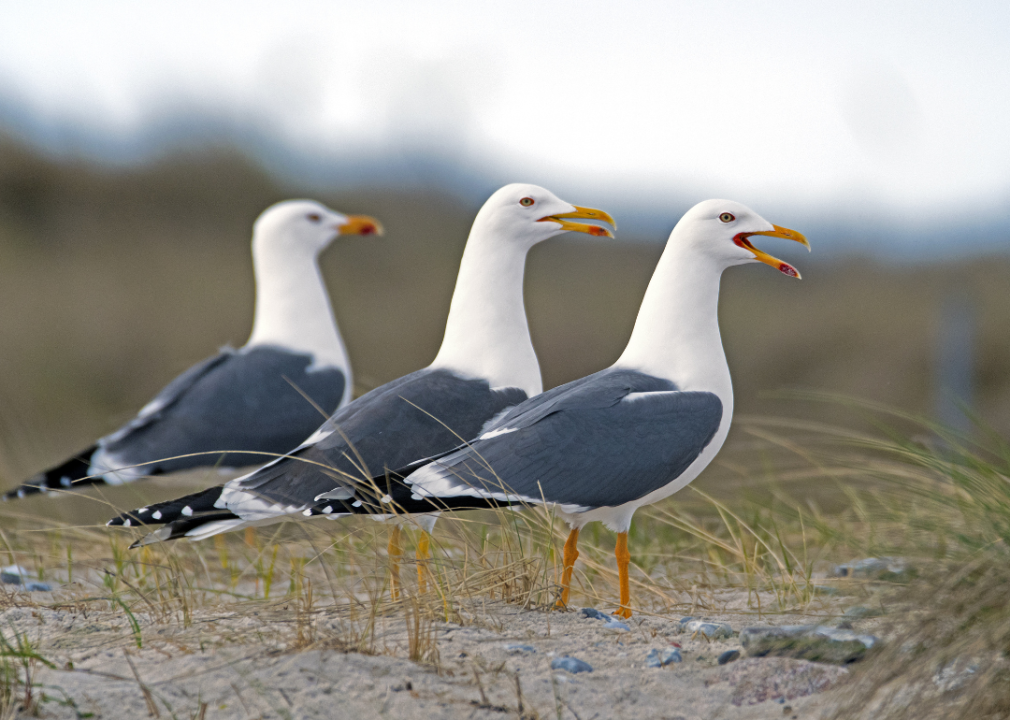
Canva
#25. Herring gull
Three herring gulls on a beach
– Total collisions: 220
– Collisions with damage reported: 6.8%
The herring gull, a North Atlantic seagull, is known for its robust body. Despite weighing between just 1.8 and 2.8 pounds, the bird can cause some considerable damage to aircraft. In fact, in September 2003, one even caused an engine surge that resulted in a plane crash in North Wales.

Canva
#24. Swainson’s thrush
A Swainson’s thrush in the grass.
– Total collisions: 226
– Collisions with damage reported: 3.5%
The Swainson’s thrush is a small, olive-brown songbird that typically lives among brushy forests. However, a 2015 study published in the Auk found that the species changes altitude frequently when migrating. This corresponds with a 2021 study by the Cornell Lab of Ornithology that found the likelihood of bird strikes by aircraft increases during migration seasons.
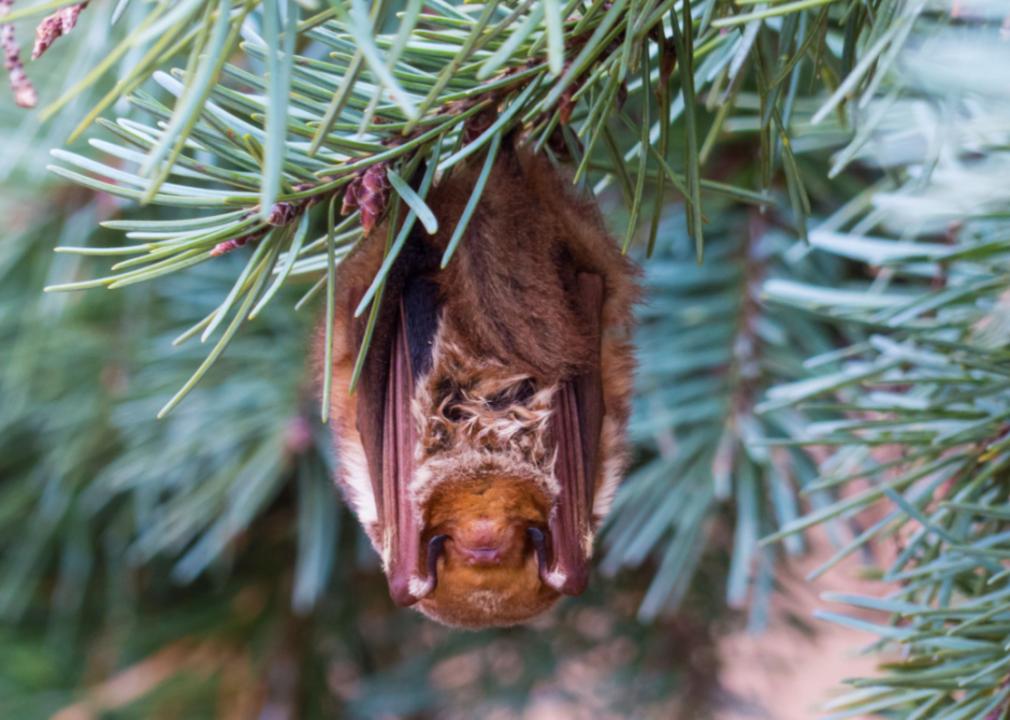
Elliotte Rusty Harold // Shutterstock
#23. Eastern red bat
An Eastern red bat hanging on a pine tree.
– Total collisions: 236
– Collisions with damage reported: 0.0%
The most populous tree bat in North America, the eastern red bat, migrates long-distance along the Atlantic seaboard. Weighing in at less than half an ounce, this microbat is unlikely to cause much damage to aircraft when hit.
Canva
#22. Ring-billed gull
A ring-billed gull perched on a boardwalk.
– Total collisions: 246
– Collisions with damage reported: 2.0%
The ring-billed gull is one of the few gulls that mostly nest near freshwater and away from coastlines. Interestingly, during breeding season, they return to the area where they first hatched—typically in the northern parts of the United States and southern parts of Canada.
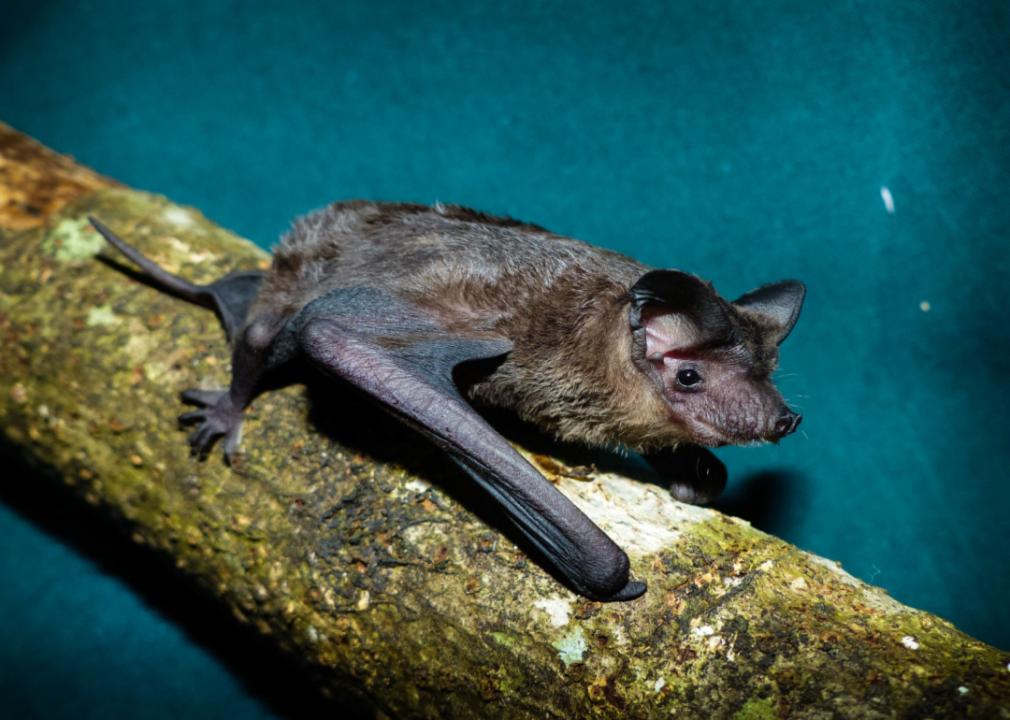
Connie Pinson // Shutterstock
#21. Microbats, exact species unknown
A microbat on a mossy tree.
– Total collisions: 301
– Collisions with damage reported: 0.3%
There are more than 900 species of microbats, whose total population constitutes 17% of all mammals on earth. Bats are divided between suborders—microbats, which are smaller bats that can use echolocation to hunt insects; and megabats, which are much larger and eat mainly fruit and nectar.
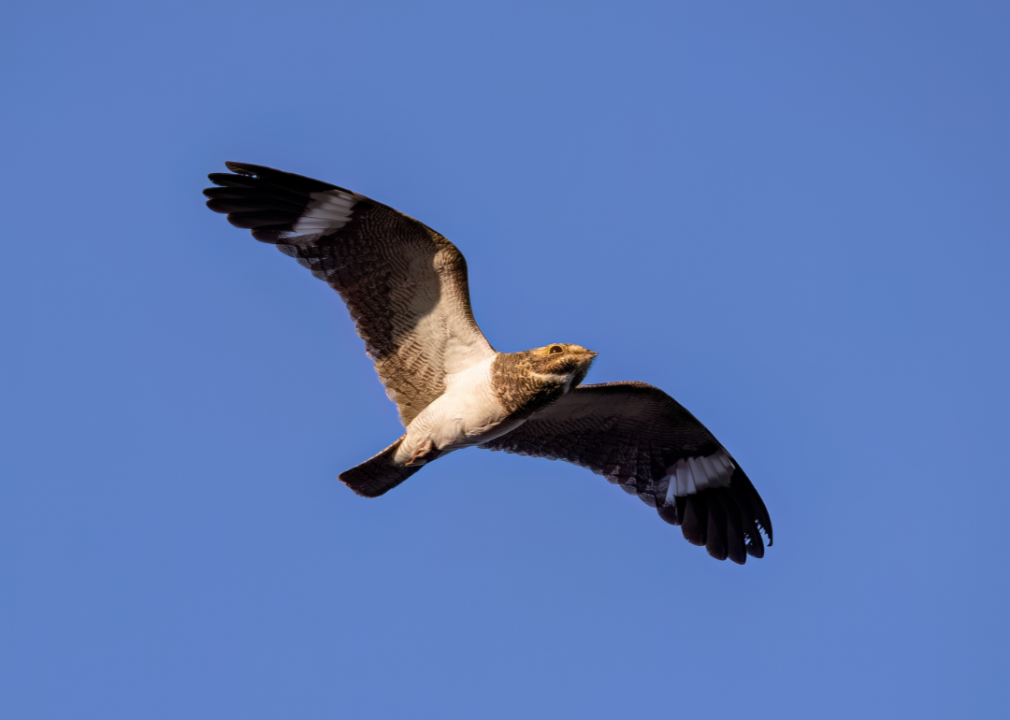
Canva
#20. Common nighthawk
A nighthawk in flight against a blue sky.
– Total collisions: 308
– Collisions with damage reported: 0.3%
The common nighthawk is a medium-sized bird that spends breeding season in Canada and the United States, migrates through Mexico, and then lives in South America. As aerial foragers, their primary hunting strategy is to catch insects in mid-air.
Canva
#19. Barn owl
A brown and white owl flying.
– Total collisions: 310
– Collisions with damage reported: 1.3%
The barn owl is found in almost all regions of the world. As a nocturnal hunter, it comes as no surprise that it is the owl species most frequently struck by aircraft. In a 2018 study by the University of Nebraska, approximately three-quarters of owl strikes occurred during nighttime.
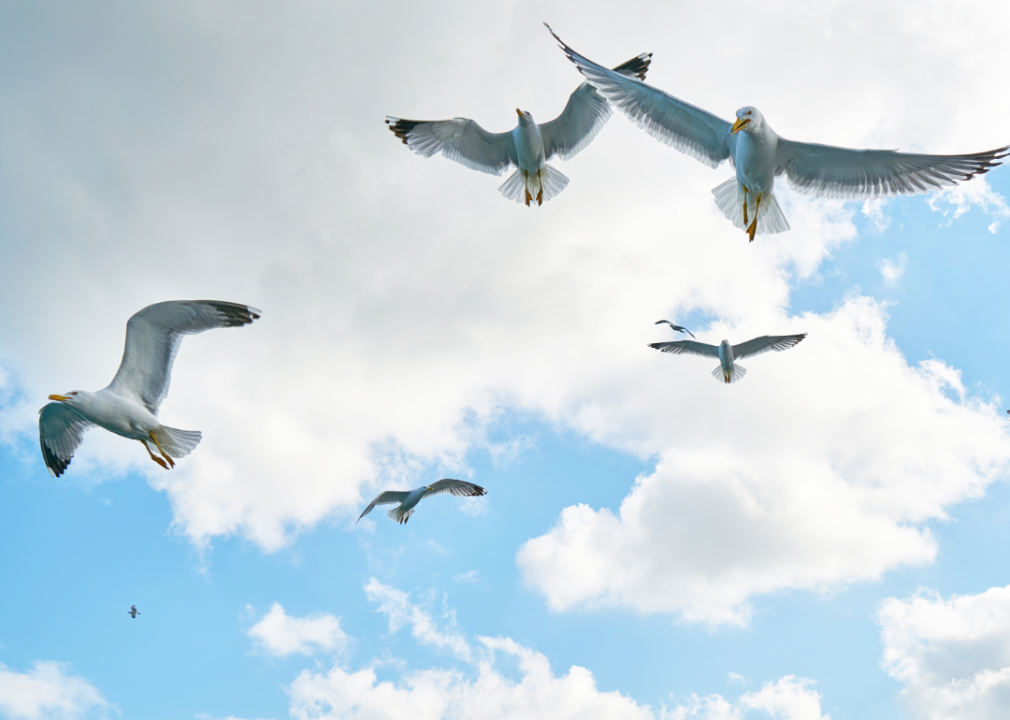
Canva
#18. Gulls
A flock of gulls flying against a blue sky and white clouds.
– Total collisions: 333
– Collisions with damage reported: 8.4%
Gulls include more than 40 species of seabirds that are distinctive for their white and gray plumage. The first fatal plane crash caused by a bird involved a gull in the primitive days of aviation history. On April 4, 1912, pilot Cal Rodgers hit a gull during a flight in Long Beach, California, which became tangled in the rudder control, causing the plane to crash. Rodgers died en route to the hospital.
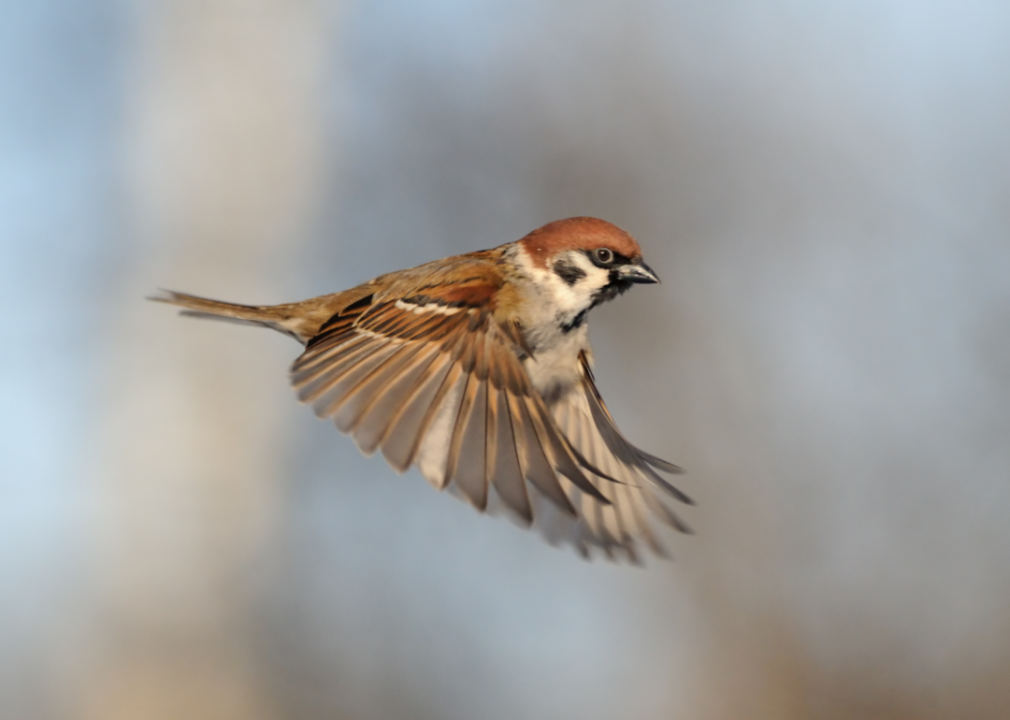
Canva
#17. Sparrows
A flying sparrow with wings spread.
– Total collisions: 335
– Collisions with damage reported: 0.0%
Sparrows are small, stocky brown birds that typically weigh about one ounce. As ground foragers, they don’t fly at very high altitudes, and also do not migrate.
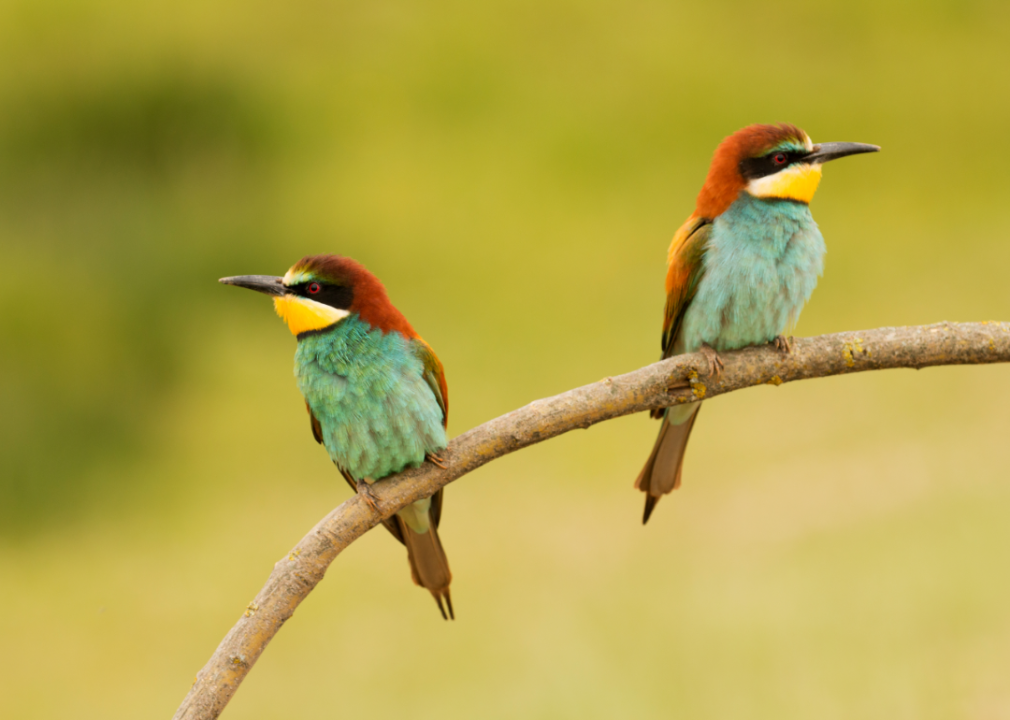
Canva
#16. Perching birds
Two small colorful birds perched on a tree branch.
– Total collisions: 347
– Collisions with damage reported: 2.3%
Perching birds, or passerines, include any of the 5,700 bird species under the order Passeriformes. They are distinctive for their toe structure, which features three facing forward and one facing backward. Perching birds make up approximately 60% of all known bird species.
Canva
#15. Savannah sparrow
A Savannah sparrow standing in dead grass.
– Total collisions: 401
– Collisions with damage reported: 0.5%
The savannah sparrow resembles the house sparrow in appearance but contrastingly migrates during breeding season. Weighing in at an ounce or less, the small songbird is unlikely to cause much aircraft damage upon collision.
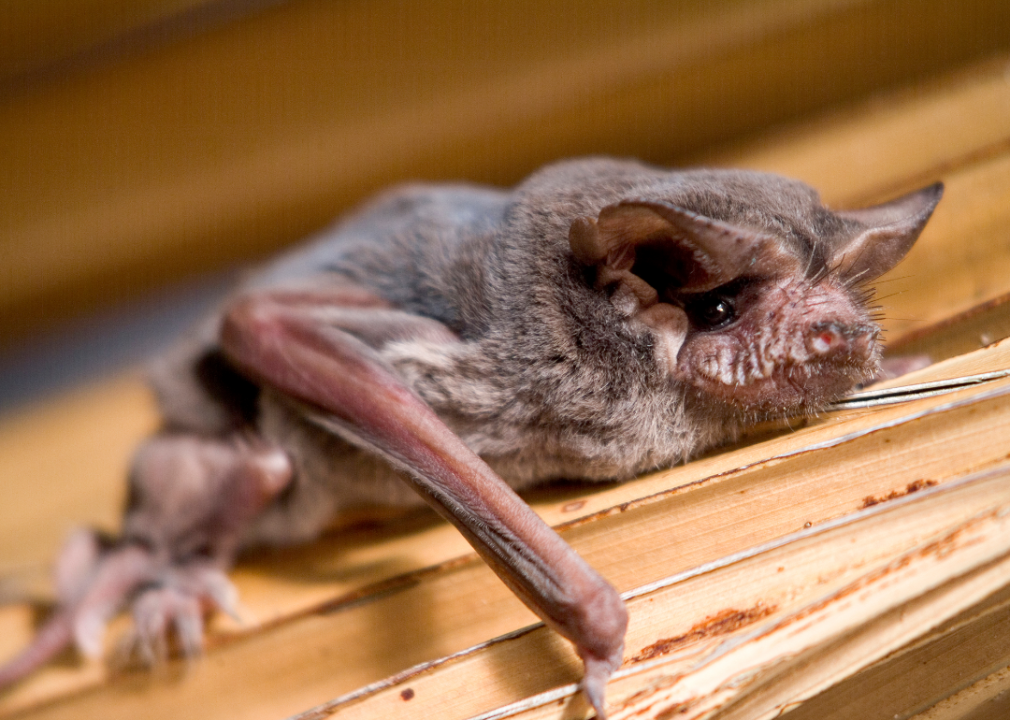
Canva
#14. Brazilian free-tailed bat
A Brazilian free-tailed bat.
– Total collisions: 418
– Collisions with damage reported: 0.7%
The Brazilian free-tailed bat is a member of the family Molossidae, known for its unique ability to reach high altitudes. The Brazilian free-tailed bat in particular is known for reaching a flight altitude of nearly 10,000 feet, the highest recorded for bats.
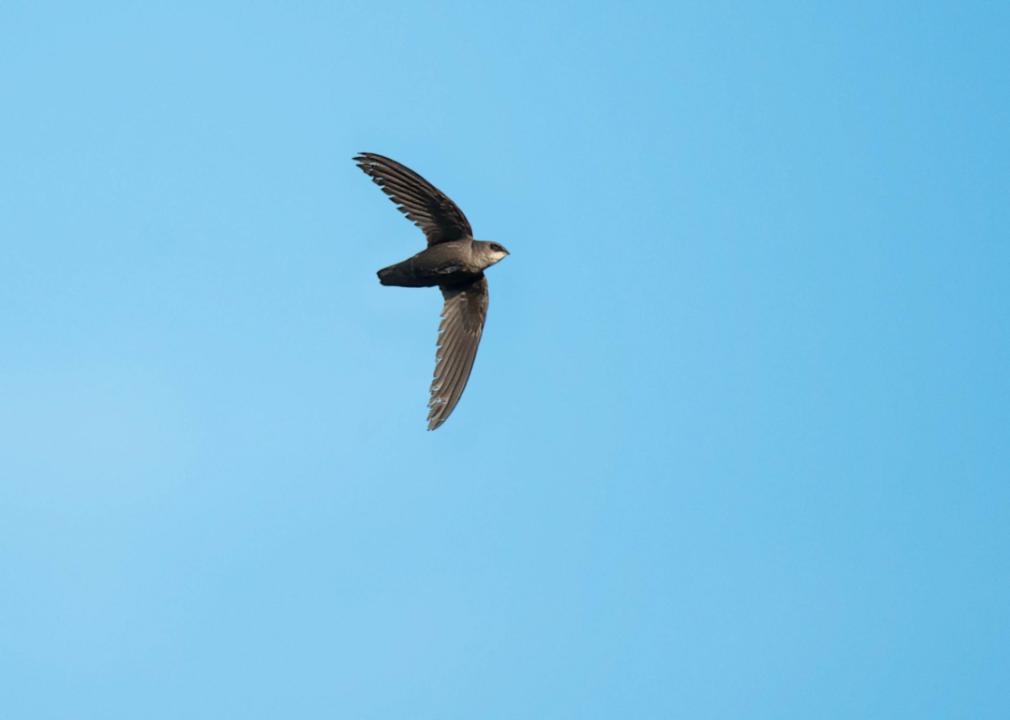
Paul Reeves Photography // Shutterstock
#13. Chimney swift
A chimney swift flying through a clear blue sky.
– Total collisions: 444
– Collisions with damage reported: 1.6%
The chimney swift is a small, dark gray bird that nests in house chimneys, which resemble hollow trees. The population’s numbers are decreasing, in part due to the waning popularity of house chimneys. The species was thus added to the list of birds protected by the Migratory Bird Treaty Act.
Canva
#12. American robin
A small brown and black bird with a berry in its mouth.
– Total collisions: 461
– Collisions with damage reported: 6.9%
The American robin is a small, gray-brown thrush found year-round all throughout the United States, recognizable for its bright orange crest. The most abundant bird in the United States migrates when the ground freezes, thus limiting its food supply, rather than for breeding purposes.
Canva
#11. Western meadowlark
A Western meadowlark standing on a post.
– Total collisions: 509
– Collisions with damage reported: 0.4%
The Western meadowlark is a vibrant blackbird with a yellow crest, and is known for its pleasant tune and tendency to flock among other species. Well-loved in its native United States, the bird is the state bird of Nebraska, Kansas, Oregon, Montana, North Dakota, and Wyoming.
Canva
#10. Rock pigeon
A Rock Pigeon sitting on a TV dish.
– Total collisions: 517
– Collisions with damage reported: 3.9%
The rock pigeon, or common pigeon, is the quintessential gray bird that has thrived in human environments since being introduced to North America in the 1600s. Competitive pigeon racing enthusiasts are often at odds with wildlife and airport management, as racing pigeon strikes cannot be addressed with traditional wildlife control strategies via their habitats.
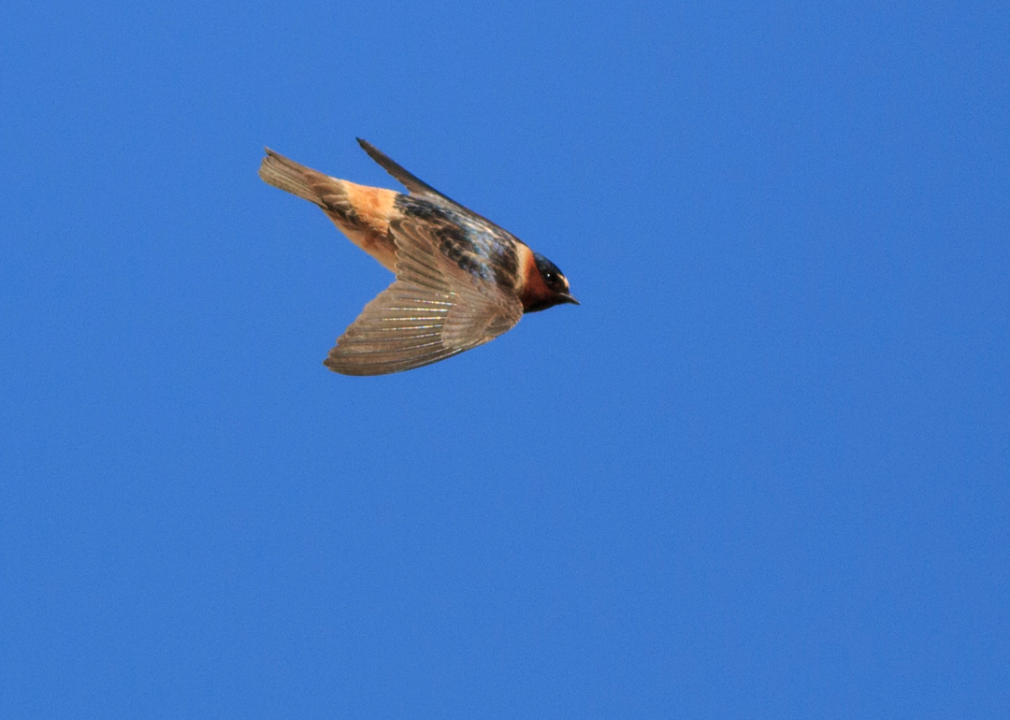
Canva
#9. Cliff swallow
A cliff swallow flying against a blue sky.
– Total collisions: 611
– Collisions with damage reported: 0.3%
The cliff swallow is a small, red and brown bird that nests in mud and hunts for insects mid-air. Its unique aerial and combat patterns have been documented in several studies by researchers who have identified potential navigation and military applications.
Canva
#8. Red-tailed hawk
A red-tailed hawk standing in grass.
– Total collisions: 634
– Collisions with damage reported: 11.7%
The red-tailed hawk is believed to be North America’s most common hawk, residing year-round in the United States, Mexico, and Central America. In January 2009, a red-tailed hawk collided with a helicopter, eventually leading to its crash, which caused eight fatalities. This was the fifth deadliest aircraft crash caused by bird strike.
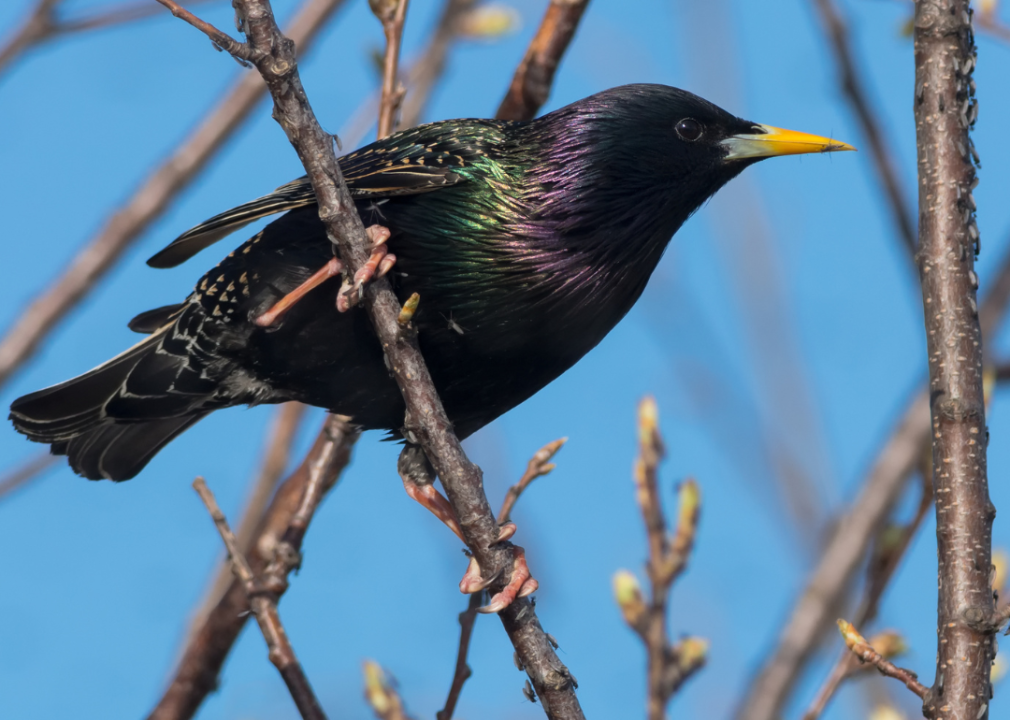
Canva
#7. European starling
A European starling perched on a branch.
– Total collisions: 796
– Collisions with damage reported: 1.3%
The European starling, also known as the common starling, has abounded in North America since first being introduced to the continent in the 19th century. Despite its small size, the European starling was involved in the deadliest bird strike incident of all time, which occurred in Massachusetts in 1960: Eastern Airlines flight 375. During takeoff, the plane collided with a flock of starlings that were ingested into its engines, causing it to crash into Winthrop Bay and resulting in 62 fatalities.
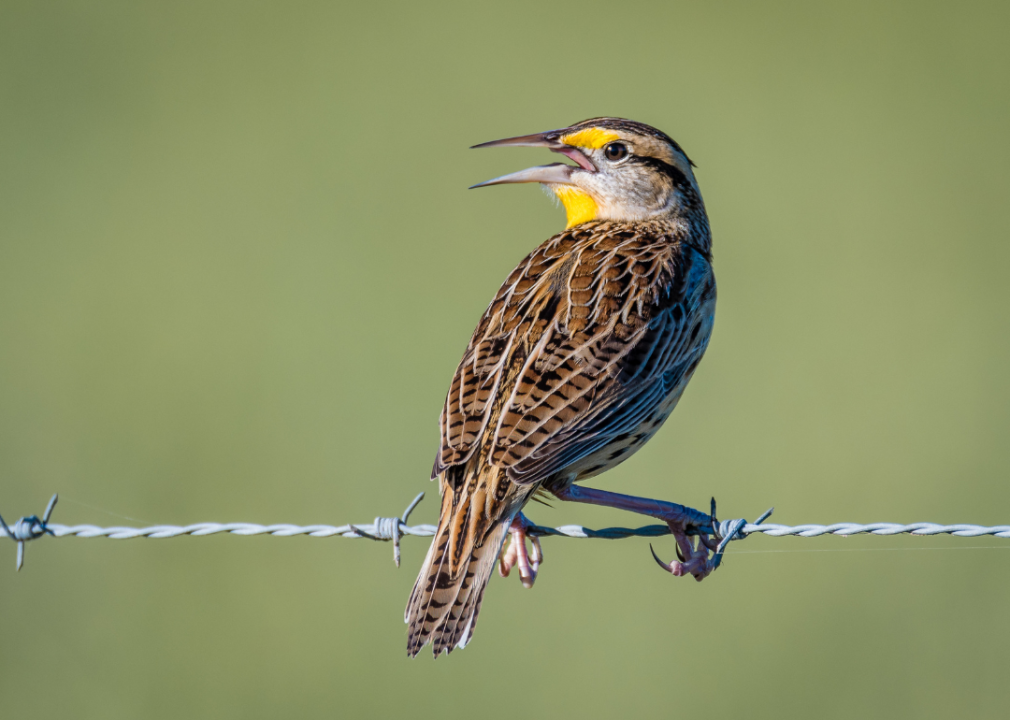
Canva
#6. Eastern meadowlark
An Eastern meadowlark sitting on a wire.
– Total collisions: 1,019
– Collisions with damage reported: 1.4%
Similar in appearance and size to its Western counterpart, the Eastern meadowlark is differentiated by its clearer-sounding song. It migrates short distances for breeding season, but typically resides in warmer areas of the eastern United States.
Canva
#5. American kestrel
A small bird with blue and red on its back.
– Total collisions: 1,775
– Collisions with damage reported: 0.6%
The American kestrel is the smallest falcon and was once one of the most common raptors in North America. Measuring between just 8.7 and 12.2 inches, the kestrel is more similar in size to a mourning dove than other fellow raptors. For this reason, the kestrel causes far less damage to aircraft than other birds in its genus despite being struck with much greater frequency.
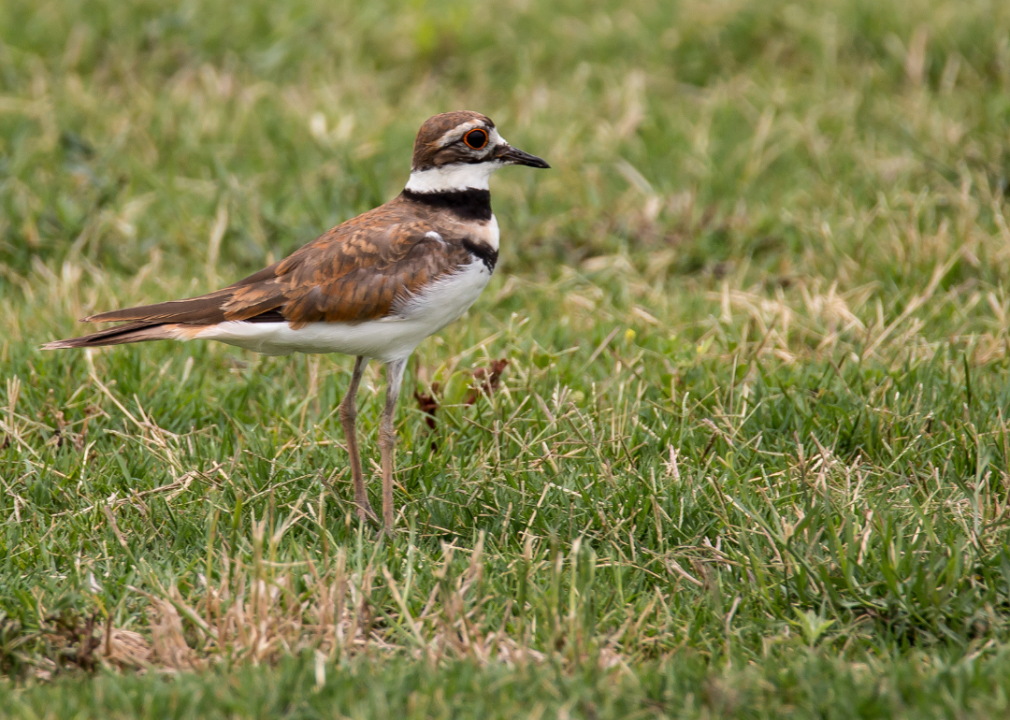
Canva
#4. Killdeer
A killdeer standing in grass.
– Total collisions: 2,015
– Collisions with damage reported: 0.5%
The killdeer is a brown shorebird named for its kill-deer wail. The distinctive bird has two black bands around its neck, and black and white plumage on its wings. The killdeer forages on the ground for food, making them particularly susceptible to bird strike incidents during takeoffs and landings.
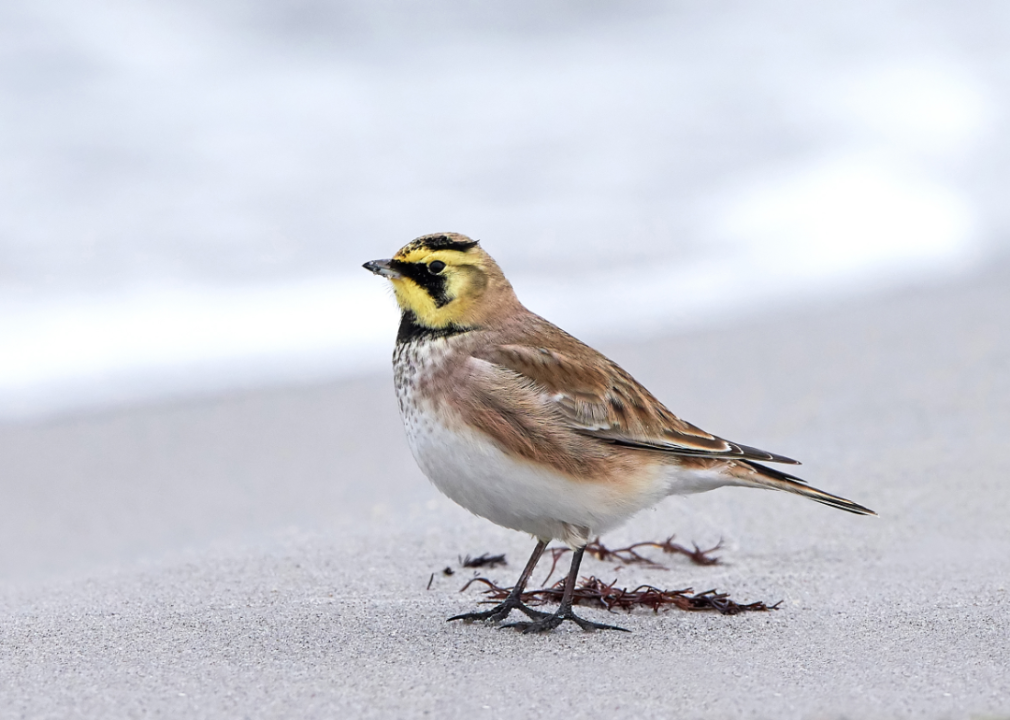
Canva
#3. Horned lark
A horned lark on the sand.
– Total collisions: 2,060
– Collisions with damage reported: 0.5%
The horned lark is recognizable by its horn-like feather tufts, present only on males. Sadly, the species has faced rapid population decline in recent years, owing to the widespread use of pesticides, the destruction of their habitats, and collisions at wind turbines and airports. It is currently listed as a threatened species under the Endangered Species Act.
Canva
#2. Barn swallow
A black and white bird flying.
– Total collisions: 2,348
– Collisions with damage reported: 0.3%
The barn swallow is a small blue and black bird with a vibrant red head that migrates year-round within North America. As dive-bombers, they change altitude frequently, making them susceptible to bird strikes at multiple stages of flight.
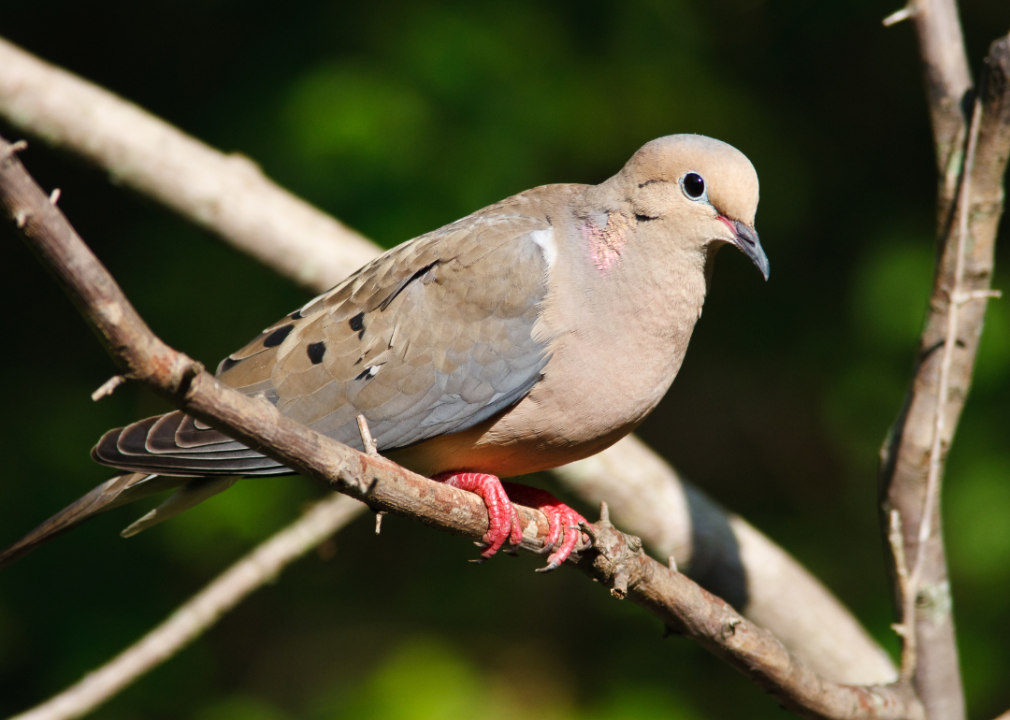
Canva
#1. Mourning dove
A mourning dove perched on a branch.
– Total collisions: 2,837
– Collisions with damage reported: 1.2%
Mourning doves are light beige doves that live year-round in the United States and flock in formation during breeding season. The species frequently tops the list for aircraft strikes. According to the FAA, mourning doves made up 11% of all birds struck by aircraft between 1990 and 2019.
Story editing by Shannon Luders-Manuel. Copy editing by Lois Hince. Photo selection by Lacy Kerrick.
